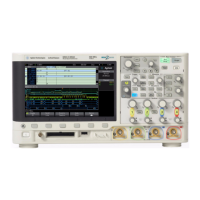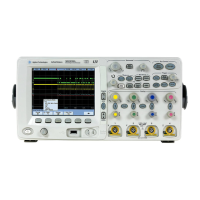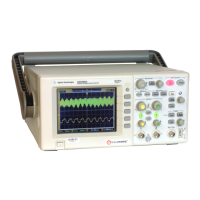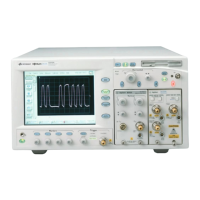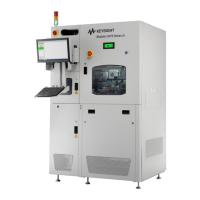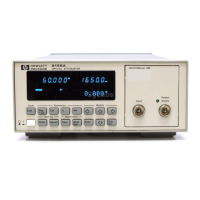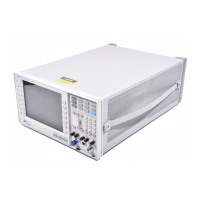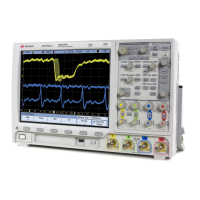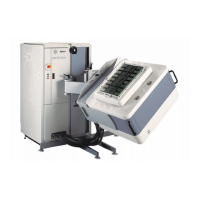Do you have a question about the Agilent Technologies InfiniiVision 3000 X-Series and is the answer not in the manual?
| Vertical Resolution | 8 bits |
|---|---|
| Operating Temperature | 0 °C to 50 °C |
| Channels | 2 or 4 |
| Display | 8.5-inch WVGA (800 x 480) |
| Input Impedance | 1 MΩ ± 1% |
| Trigger Modes | Edge, Pulse Width |
| FFT | Yes |
| Weight | 5.5 lbs |
| Power Requirements | 100-240 VAC, 50/60 Hz |
Details Agilent's warranty terms for the manual content.
Outlines terms for using software and hardware under license.
Specifies US Government use, duplication, and disclosure rights.
Highlights hazards and precautions for safe operation.
Overview of 3000 X-Series oscilloscope models, bandwidths, and sample rates.
Guide to verifying all items are present and undamaged in the shipment.
Instructions for installing communication modules in the rear panel.
Steps for connecting power and turning on the instrument.
Procedures for connecting probes to input channels.
Steps to ensure accurate measurements by calibrating probe compensation.
Identifies and explains the function of front panel keys and ports.
Identifies and explains the function of rear panel ports and connectors.
Explains the different areas and indicators of the oscilloscope's display.
How to use the oscilloscope's context-sensitive help system.
How to set the time base for viewing waveforms.
How to set the horizontal position of the trigger point.
Techniques for moving and magnifying waveforms after acquisition.
How to select Normal, XY, or Roll display modes.
How to find specific events within acquired data using search criteria.
Steps to set the vertical sensitivity (volts/division) for analog channels.
How to move waveforms up or down on the display.
How to set input coupling to AC or DC for analog channels.
How to set analog channel impedance to 50 Ohm or 1 MOhm.
How to configure probe parameters like attenuation and units.
How to enable and view math functions on analog channels.
How to apply operations like FFT, integrate, or filters to waveforms.
How to manually adjust the display of math waveform results.
Procedures for saving waveforms to the oscilloscope's internal reference memory.
How to view saved reference waveforms for comparison.
Managing reference waveforms using USB devices.
Steps for physically connecting digital probes to the DUT.
How to capture data from digital channels.
Automatic setup for optimal display of digital channel data.
How to set the voltage threshold for digital signal interpretation.
How to group digital channels for bus display in hex or binary.
Factors affecting signal accuracy and proper probing techniques.
Overview of available serial protocol decoding licenses and capabilities.
Using the Lister tool to investigate protocol failures in a tabular format.
How to find specific events or data within serial decode logs.
How to control the brightness of waveforms for better visibility of details.
Configuring display persistence modes (Off, Infinite, Variable) to view waveform behavior.
How to capture a static image of the current waveform without stopping acquisition.
How to show or hide channel labels on the oscilloscope display.
Assigning standard labels from a library to specific channels.
Creating custom labels for channels using the oscilloscope interface.
Restoring the label library to its original factory configuration.
How to set the voltage level for analog and digital signal triggers.
Configuring triggers based on signal edge slope and level.
Setting up triggers to capture pulses of a specific width.
Triggering based on a specific sequence of channel states or bus values.
Setting up triggers for standard analog video signals.
Configuring triggers for USB protocol events like Start/End of Packet.
Setting up triggers for various serial communication protocols.
Choosing between automatic triggering or waiting for specific conditions.
Setting the input coupling for the trigger path (DC, AC, LF Reject, TV).
Configuring the time delay before re-arming the trigger circuit.
Using the rear panel EXT TRIG IN connector as a trigger source.
Managing the oscilloscope's acquisition process using Run/Stop and Single keys.
Choosing between Normal, Peak Detect, Averaging, and High Resolution modes.
Capturing infrequent or burst signals efficiently by dividing memory into segments.
Procedures for placing and adjusting cursors for custom measurements.
Demonstrations of using cursors for various measurement tasks.
Steps to initiate automatic measurements on waveforms.
Details on performing measurements like Amplitude, Peak-Peak, and RMS.
Details on performing measurements like Period, Rise Time, and Pulse Width.
How to define vertical levels for accurate measurement calculations.
Viewing statistical data (mean, std dev, count) for measurements.
Automatically generating a mask based on a reference waveform.
Configuring parameters for mask testing, like run conditions and error actions.
Displaying and analyzing the results of mask tests.
Editing mask definition files on a PC and loading them onto the oscilloscope.
Steps to enable and configure the DVM analysis feature for voltage and frequency.
Choosing and configuring standard waveform types like Sine, Square, and Ramp.
Creating and defining custom waveforms by setting points and levels.
Applying predefined voltage levels for common logic families (TTL, CMOS, ECL).
Configuring AM, FM, and FSK modulation for the carrier signal.
Procedures for saving oscilloscope configurations, images, and waveform data.
Procedures for loading previously saved configurations, masks, or waveform data.
Restoring the oscilloscope to its factory or default settings.
Securely clearing all non-volatile memory and rebooting the instrument.
How to connect a printer and print the current screen image.
Configuring the oscilloscope to print to a network printer.
Customizing print output, including setup information and graticule inversion.
Configuring USB, LAN, and GPIB interfaces for remote control and data transfer.
Steps to connect the oscilloscope to a network via LAN.
Navigating and managing files on internal storage and USB devices.
Customizing general oscilloscope behavior like display, screen saver, and AutoScale.
Accessing self-tests, calibration, and cleaning procedures.
Adding text notes to the oscilloscope display for documentation.
How to connect to the oscilloscope's web server using a browser.
Navigating and using the web interface's remote control features.
Saving and recalling oscilloscope files through the web interface.
Capturing and saving oscilloscope screen images via the web interface.
Securing the oscilloscope's network access by setting a password.
Detailed technical specifications and performance characteristics of the oscilloscope.
Defining safety categories (I, II, III, IV) for oscilloscope measurements.
Operating and non-operating temperature, humidity, and altitude limits.
Information on compatible probes, accessories, and their specifications.
Procedures for installing and viewing software licenses.
How to update the oscilloscope's software and firmware.
Structure and details of binary waveform data files for export.
How to import binary data into MATLAB for analysis.
Explanation of the structure and fields within binary file headers.
Steps to configure the oscilloscope for capturing and decoding CAN bus signals.
Setting up trigger conditions specific to CAN protocol messages.
Enabling and interpreting decoded CAN bus data on the display.
Steps to configure the oscilloscope for capturing and decoding LIN bus signals.
Setting up trigger conditions specific to LIN protocol messages.
Enabling and interpreting decoded LIN bus data on the display.
Configuring the oscilloscope for capturing and decoding FlexRay bus signals.
Setting up trigger conditions specific to FlexRay protocol frames, errors, or events.
Enabling and interpreting decoded FlexRay bus data on the display.
Configuring the oscilloscope for capturing and decoding I2C bus signals.
Setting up trigger conditions specific to I2C protocol events like Start/Stop conditions.
Enabling and interpreting decoded I2C bus data on the display.
Configuring the oscilloscope for capturing and decoding SPI bus signals.
Setting up trigger conditions specific to SPI protocol data patterns.
Enabling and interpreting decoded SPI bus data on the display.
Configuring the oscilloscope for capturing and decoding I2S bus signals.
Setting up trigger conditions specific to I2S protocol data values or errors.
Enabling and interpreting decoded I2S bus data on the display.
Configuring the oscilloscope for capturing and decoding MIL-STD-1553 signals.
Setting up trigger conditions for MIL-STD-1553 protocol data words or errors.
Enabling and interpreting decoded MIL-STD-1553 data on the display.
Configuring the oscilloscope for capturing and decoding ARINC 429 signals.
Setting up trigger conditions specific to ARINC 429 protocol labels or errors.
Enabling and interpreting decoded ARINC 429 data on the display.
Configuring the oscilloscope for capturing and decoding UART/RS232 serial signals.
Setting up trigger conditions for UART/RS232 serial data, stop bits, or parity errors.
Enabling and interpreting decoded UART/RS232 serial data on the display.
